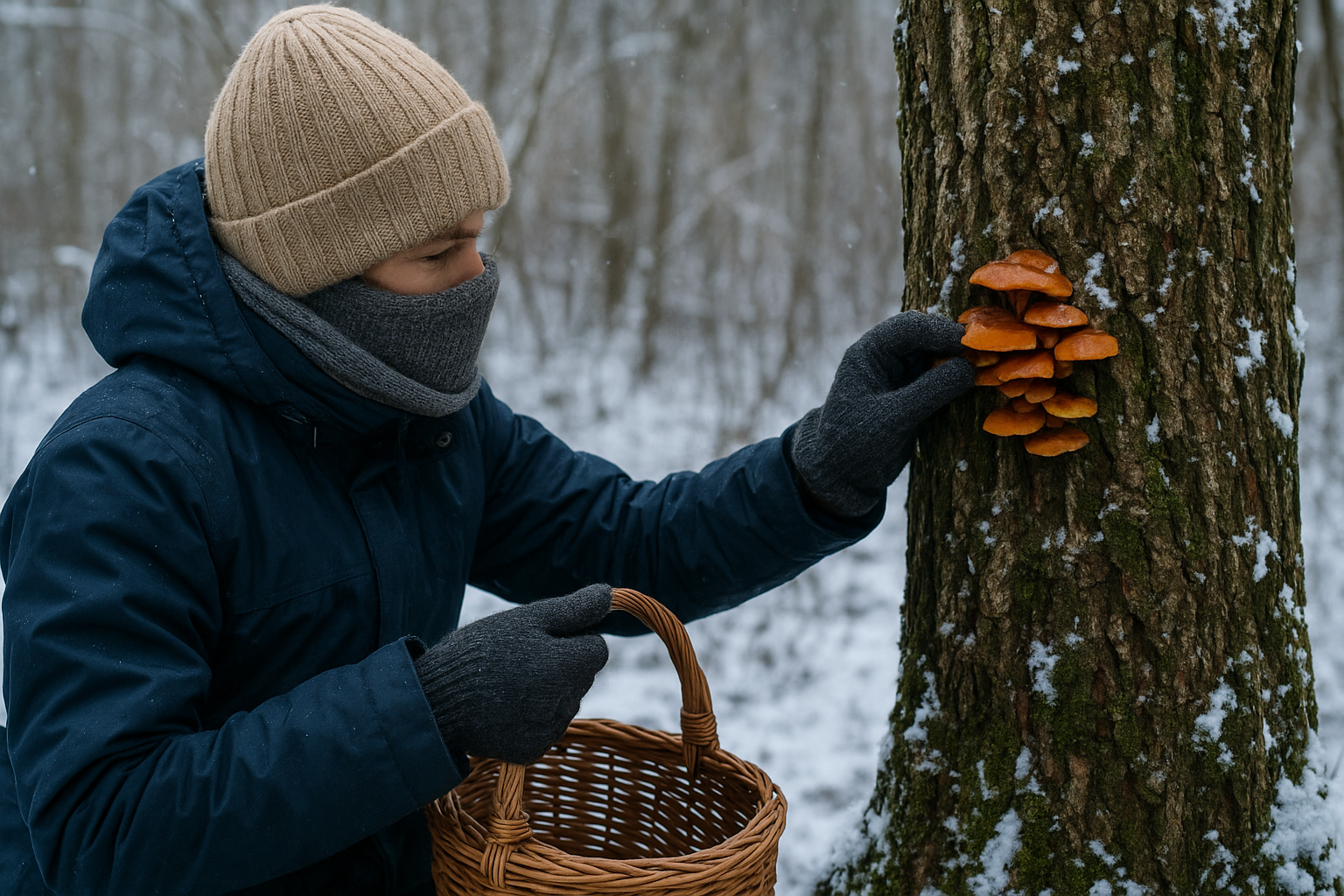Winter Foraging Tips: Stay Warm and Comfortable Outdoors
Foraging in winter can feel like stepping into another world. The forests are quiet, frosts shimmer on the ground, and wild foods still thrive if you know where to look. But anyone who has tried gathering mushrooms or berries in the colder months knows one thing: staying warm is just as important as finding a good patch. Comfort keeps you safe, focused, and able to enjoy the experience fully. In this guide, we’ll explore practical ways to stay warm while winter foraging, what gear makes a real difference, and a few wild foods you can expect to find in the UK’s colder months.
Start with the Right Base Layer
The base layer is your first defense against the cold. Its job is to keep your body dry and regulate your core temperature, which is critical when moving slowly through damp forests. Natural fabrics like merino wool or bamboo are excellent choices, as they wick moisture while insulating against the chill.
For those who spend hours outdoors, a heated vest can be a game-changer. Unlike bulky coats, it provides on-demand warmth right where you need it — your core — without adding weight or restricting movement. This allows you to layer smarter while keeping flexibility for bending, crouching, and carrying baskets.
Layer Up for Comfort and Mobility
- Mid Layer: Choose insulating pieces like fleece or wool sweaters. They trap warmth while allowing breathability.
- Outer Layer: A waterproof, windproof shell is essential for resisting rain, snow, and icy winds.
- Socks & Footwear: Cold feet end a trip quickly. Wool socks paired with waterproof boots keep you dry and insulated against frozen ground.
- Hats & Scarves: Up to 40% of body heat can be lost through the head and neck — don’t overlook them.
Layering allows you to adapt throughout the day. You may warm up while walking to a spot, but cool down once you stop to pick or observe. Being able to add or remove layers makes all the difference in staying comfortable.
Keep Warm Through Smart Strategies
Clothing is only part of the equation. How you forage and plan your trip directly impacts how warm you feel:
- Keep Moving: Staying active keeps circulation flowing. Avoid sitting or standing still for too long.
- Choose Sheltered Spots: Valleys, dense woods, or areas with natural windbreaks reduce exposure.
- Pack a Hot Drink: A stainless steel thermos filled with tea, broth, or coffee provides instant warmth and hydration.
- Take Warm Breaks: If you need to rest, use an insulated mat or heated seat pad to stay off frozen ground.
Plan Ahead for a Safer Foraging Trip
Winter conditions change quickly. Planning ahead not only keeps you warmer but also safer:
- Check the weather forecast before setting out — cold, damp days feel much harsher than dry, crisp ones.
- Time your trips for late morning to afternoon, when the day is at its warmest.
- Carry a spare layer in case your clothing gets wet.
- Tell someone your foraging route and expected return time, especially in remote areas.
For more outdoor planning inspiration, you might also enjoy our guide on keeping warm at scenic winter viewpoints, which covers useful cross-over tips for anyone spending extended time outdoors.
Know the Signs of Cold Stress
Foragers often get caught up in the hunt, ignoring early signals of cold stress. Watch for:
- Numb fingers or toes
- Shivering that doesn’t ease with movement
- Clumsiness or slower reactions
- Pale or discolored skin on extremities
If you notice these, it’s time to warm up immediately. A heated vest or a thermos of hot liquid can make the difference between continuing safely or risking hypothermia.
Winter Foraging Finds in the UK
While winter may seem sparse, nature still provides if you know where to look. Always forage responsibly, double-check identification, and avoid polluted or private land. Some safe and common finds in the UK include:
- Velvet Shank Mushrooms: A hardy mushroom that thrives in freezing weather, often found on dead logs.
- Wood Blewit: Easily identified by its violet hues, these mushrooms appear late into the season.
- Sloes: These tart berries remain on blackthorn bushes into winter, often after the first frosts.
- Rosehips: Packed with vitamin C, they brighten hedgerows deep into winter.
- Sweet Chestnuts: Often still found on the ground in early winter, they provide both food and fuel for a campfire snack.
Even a small winter forage can be rewarding — both for your basket and your wellbeing.
Final Thoughts
Winter foraging is about preparation, patience, and respect for nature. Staying warm allows you to focus on the beauty of the season and the thrill of the find rather than the bite of the cold. With smart layering, strategic planning, and a little help from modern heated gear, you can enjoy foraging in comfort all season long.
Ready to make your next foraging trip warmer, safer, and more rewarding? Explore Warmweave’s most-loved gear — designed to keep outdoor adventurers comfortable in every season.
Shop Warmweave’s Most Loved Gear


